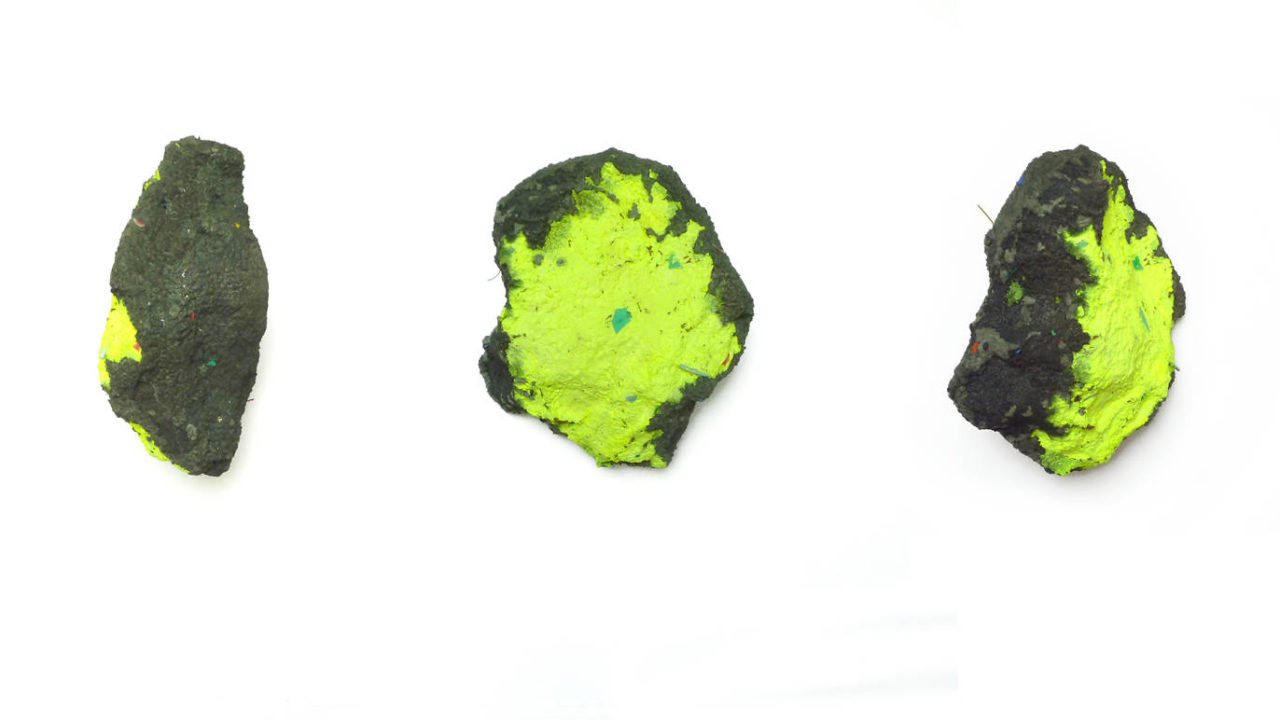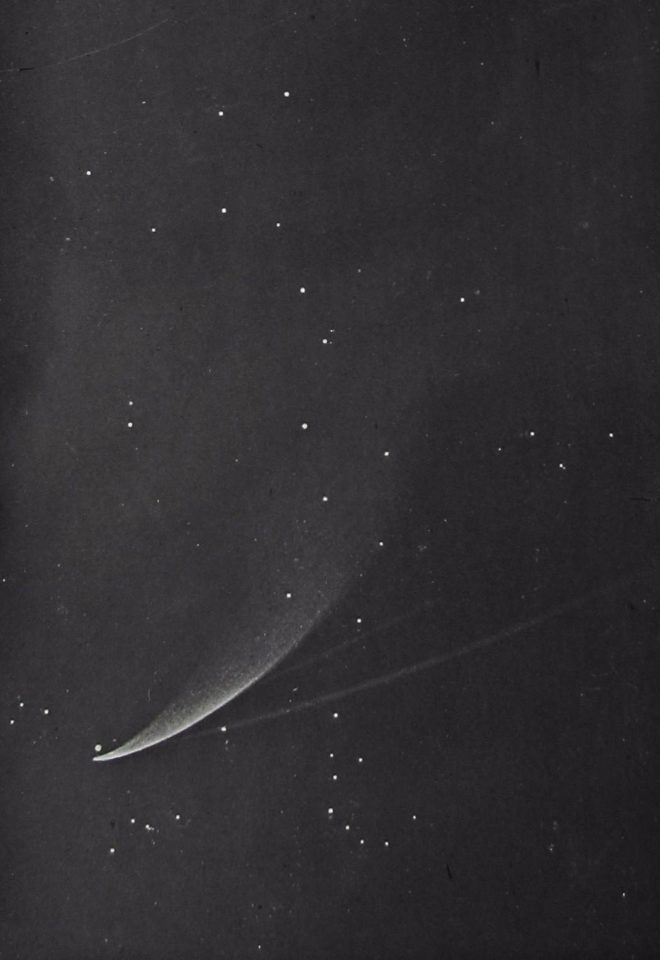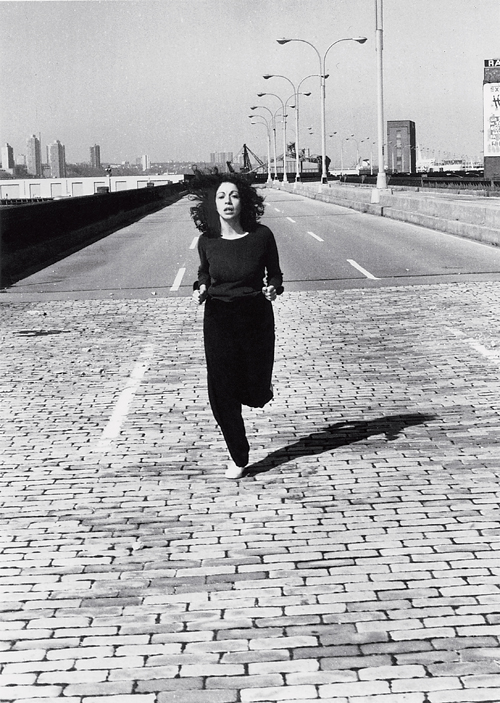info@graf.cat
January 2020
by Alicia Kopf
Cosmographies
Taking the most basic spacecraft that one has ever been given – the body itself – I head to the closest underground hole with a <Metro. Red line> signal. This tunnel does not go through time, but it does shorten it. I get off at Sant Andreu Comptal, to go to Fabra i Coats Cultural Center, where it is taking place One day I came across a meteorite. The curator and artistic director of Loop videoart fair, Carolina Ciuti, inspired by the Cosmicòmiques of Italo Calvino, builds an audiovisual tale around the gaze as a place of projection for human desires. In the video by Regina Miguel, Isla Decepción, (2017), the artist travels to Antarctica observed by herself as the one who comes down from the spacecraft; the author defines her work as the story of an internal or existential displacement in a mitopoietic scenario. With echoes of Clarice Lispector in La Pasión According to G.H she describes the place like this: “Deception Island belongs to the future, it contains buried life, extremophile, tiny revenants waiting to be awakened.” An environment, inhabited by organisms adapted to the toughest conditions in which life is possible, contemplated in between fascination and horror, while the narrator wonders not anymore “who I am”, but perhaps something more relevant in times of the revision of what is human on earth: “among who I am”.

In a parallel reality of the same exhibition hall, turns Meteorito fosforito (2013) by Belén Rodríguez, in its resounding materiality while a camera records it live and a screen retransmits its movement, translating that presence to the most convincing visual codes of science fiction: black background and distant glows; we all float, phosphorite, you and I, wrapped in 74% of dark energy in the outer space. At the back of the room, starbursts lighten pages of what looks like an encyclopedia of the Cosmos, a video work by artist Julia Llerena: 43 Tiny Explosions, (2015). While I meditate on the strange seduction of a combustion that converts the printed images of the static universe of the book into glare, a discrete and enigmatic accumulation like a sphinx crosses my path; a micro-projector and a fossil on photographic plate with the image of a comet. It’s 1858, Donati’s Comet, No Signal, (2018) by Pedro Torres. What do they have in common the ancient burial of a snail and the elliptical and eccentric paths around the sun of a piece of icy land? Both are time travelers. Donati’s comet was the brightest one observed in the entire 19th century and the first to be photographed; it is the image of the plate. Each of the parts that make up this work (the image of the comet on the glass plate, the fossil and the projector itself) talks about the nature and the paradoxes of the different supports that stop it.

Alexandra Laudo’s performative conference ¿Com observar un cel nocturn? framed the exhibition with more than fundamental questions: “What is our own Big Bang? When do we begin to expand, that is, to love? ” While the curator explained the common points between the space gaze and the gaze of the artist, a group of rhythmic gymnasts were moving according to the orbit of the celestial spheres, activating an expanded reading through the movement of these closest bodies. Laudo reminded us of something fundamental: “that the function of the artist, like the one of the astronomer, is to take images away from their ontological darkness.”
The next related activity within this exhibition will be a quantum reflection on the cosmos, the performance Science-Fiction by Cris Blanco (January 14th , 7 pm).
Under the dark and starry sky we move towards other lights; the next stop is Bajo la Osa mayor by Àngels Ribé, at Tecla Sala’s Art Centre in Hospitalet. The title of the exhibition refers to the autobiographical novel El enamorado de la Osa Mayor, by Sergiusz Piasecki and the landscape cosmologies that have united its curator and the artist for years. A show curated by David Armengol in which “the driving axis is the way Àngels make things, her thinking has volume.” The exhibition contains different works from the artist, avoiding the idea of trajectory. For example the action Work is the effort against resistance and the video Triangle of the 70s dialoguing with the recent work in an arch of fifty years of artistic activity and production that deserved the last National Award for Plastic Arts.

As the ignorant protagonist of Enamorado de la Osa mayor, the one who gave the name of women to his favorite stars, I dedicate myself to explore the members of the Big Dipper on the net. I discovered that its brightest point is Alioth, a spectral white star A0p1 108 times brighter than the sun… followed by Dubha, Ursae Majoris, known as Benetnash or Alcaid, Mizar, Alcor, Merak and Phecda. Names so beautiful that they can’t be human.
“– Do you want to know something more? I can lend you a cosmography manual, and you will be able to read things about this subject.”
And like the ignorant protagonist of Piasecki, I answer:
– No, no. I am only interested in those stars.

And if one leaves wanting stellar collisions, the next station will stop in the black box of the nearest commercial cinema. We travel to the epic galactic cosmodrama that is Star Wars: la ascensión de Skywalker. We will have the usual dose of space battles, reflections on the dark side that nests in all of us and the generational conflicts that a father fallen in cynicism can awaken. This time, however, the hero choses to take the laser and heal the monster instead of attacking it. She reminds us that “there are stronger ties than blood”, and therefore everyone has the right to choose their own surname. Another twist to the family constellations of the Jedi saga and a very useful reminder during and after the Christmas holidays.
—
Text by Alicia Kopf for GRAF. Alicia is a writer and visual artist.
Images:
1- Meteorito fosforito (2013), Belén Rodríguez.
2- Photograph of Donati comet in 1858, reproduced in a glass lantern, courtesy by Pedro Torres.
3- Work is the Effort Against Resistance, 1976, Àngels Ribé.
4- Cap al lluny, 2003, Àngels Ribé.






